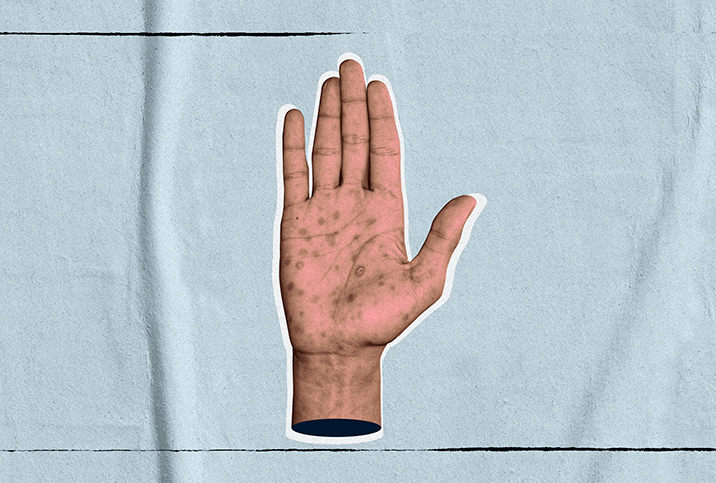Can Syphilis Mimic Rashes And Other Common Skin Conditions?

Syphilis is a sexually transmitted disease (STD) known as the great imitator because it's hard to diagnose across multiple stages. The first-stage symptoms are often overlooked, and second-stage ones are so generalized that it can be difficult to connect your initial genital rash or infection to your current rash. Disclosing all of your recent skin irritations and changes can help your doctor get to the root of what's causing the condition.
Stages and symptoms of syphilis
The first stage of syphilis typically causes a single painless sore or lesion in the genital area where the infection entered the body. This lesion can be confused as a heat rash or dermatitis because it goes away on its own after a few weeks. You might assume your body has resolved the issue, which may not be the case.
The second stage of syphilis begins after the initial sore from the first stage disappears. This stage often causes large rashes on your waist, palms or the bottom of your feet. These rashes may or may not itch and can often look like dry skin or peeling patches, particularly on your feet. The second stage can last for years, and the rash will come and go and may appear in different places throughout your body.
At this point in a syphilis infection, misdiagnosis is common. Due to the erratic presentation and general appearance of these symptoms, a doctor may test for allergens or assume environmental factors are to blame. These rashes resemble common forms of eczema and psoriasis, which make the STD difficult to recognize.
Palmoplantar psoriasis
Palmoplantar psoriasis is a skin condition that causes painful lesions on the feet and hands. These lesions often present as dry, cracked skin that will peel and become irritated or bleed from excessive scratching, much like the skin rash in second-stage syphilis.
Palmoplantar psoriasis is a common chronic skin condition brought on by stress and often inherited. This condition is known to flare up during winter months when the air is less humid, which often causes dry skin. For individuals who wash their hands frequently, such as hospitality or healthcare workers, the constant drying of wet skin can cause flare-ups.
Dyshidrotic eczema
Dyshidrotic eczema is a common form of eczema that appears as a tiny raised bump on the hands or feet. This singular small rash can itch intensely and will look like a small bug bite. This skin rash is common in individuals who have other forms of eczema or psoriasis and is thought to be hereditary.
People who live with eczema will often get rashes in isolated locations because eczema is the result of the immune system's overreaction to dry skin. It is not uncommon to scratch a spot and have it turn into a painful eczema rash within a few hours, and these flare-ups can disappear as quickly as they started.
If you already have eczema, it can be easy for your dermatologist to miss syphilis because these flare-ups can come and go for years. Syphilis can mimic other conditions, as well, so it's important to get tested for syphilis if you've ever had genital rashes or sores.
Treating syphilis
Syphilis infections are becoming more common, and treating syphilis is as simple as taking a round of penicillin if detected in the first or second stage. However, once the infection reaches the third stage, lasting brain damage can occur and is often irreversible. You can't be too careful with your health. Ask your doctor or dermatologist to do a simple blood test for syphilis, so you can be certain any skin conditions aren't indicative of an underlying health condition.


















